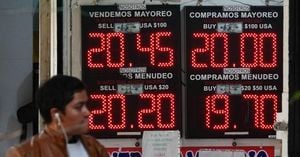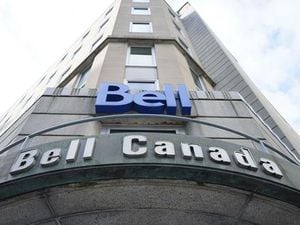In a significant move to boost its competitive edge in the Australian mortgage market, Commonwealth Bank of Australia (CBA) has announced a reduction in its owner-occupier, principal and interest variable home loan rate to 5.84%, effective May 8, 2025. This strategic adjustment highlights the intensifying competition among lenders in Australia, as over 35 financial institutions are currently offering variable rates below 5.75%, including Mortgage House, People's Choice, and Pacific Mortgage Group.
According to a CBA representative, "We are always looking to deliver value to our home loan customers. Our Digi Home Loan allows tech-savvy homebuyers to self-serve online and take advantage of a fully digital application process, ensuring a seamless, efficient, and valuable lending experience." The new rate, which marks a 0.06% decrease, is exclusively available to new customers who apply online and can provide a 40% deposit. This is notably more stringent than competitors, such as Westpac, which requires a 30% deposit, and ANZ, which allows for a 20% deposit.
In addition to the reduced rate, CBA is expanding its product offerings with the Digi Home Loan and Simple Home Loan, aimed at new owner-occupied loans with a loan-to-value ratio of 60% or less and a minimum borrowing amount of $100,000. However, it's important to note that these new offerings are not available through brokers, indicating a growing trend among banks to move away from third-party broker channels.
Just earlier today, National Australia Bank (NAB) announced it has hired approximately 150 proprietary home lenders in the first half of 2025, further reducing its reliance on third-party brokers while enhancing its direct lending capabilities. Critics argue that such moves by banks may limit competitive options for consumers, as the most attractive deals are increasingly reserved for in-house customers.
The Reserve Bank of Australia (RBA) is scheduled to meet from May 19 to May 20 to discuss monetary policy, with many economists anticipating a rate cut. The recent decision by the US Federal Reserve to maintain interest rates at 4.25 to 4.5% adds complexity to the RBA's considerations. The Fed's cautious stance reflects the rising global economic uncertainties, which could influence the RBA's approach to managing interest rates.
As the RBA has not cut rates since February 2025, speculation is mounting that it may soon take action. NAB has released a forecast suggesting a potential 150-basis-point reduction in the RBA's cash rate by early 2026, with expectations of a double cut in May followed by further reductions throughout the year. If NAB's predictions hold true, monthly repayments on a $600,000 mortgage could decrease by over $500, providing much-needed relief to borrowers who have endured nearly two years of rate hikes.
In a recent property insights webinar, NAB's head of Australian economics, Gareth Spence, indicated that positive economic indicators in Australia, coupled with increasing global uncertainty due to trade tariffs, may prompt the RBA to expedite rate cuts. He noted that the annual trimmed mean of inflation has eased to fall within the RBA's target range for the first time in over three years.
Spence expressed optimism about the RBA's ability to act more rapidly, stating, "We think the RBA can actually act a little bit more rapidly now so they can return the cash rate to neutral and be quicker. We think that’s around 3 per cent." He further highlighted that if the current trend of slowing global growth continues, rates could potentially drop to 2.6% by early 2026.
Despite the potential for rate cuts, housing supply remains a pressing issue in Australia. Spence pointed out that the government has set a target of building 1.2 million new dwellings by 2029, but current construction levels are falling short. He emphasized the need for substantial increases in housing supply to keep pace with population growth and rising prices.
Recent retail spending figures reveal that Australian households are still facing significant economic challenges. Following the RBA's decision to keep rates steady in April 2025, the market expected a rate cut at the upcoming May 20 meeting, with a 56% chance of a 50-basis-point reduction to 3.6%. The latest data from the Australian Bureau of Statistics indicates that retail spending growth was flat in the March quarter, with non-food spending even declining by 0.2% when food purchases are excluded.
Moreover, mortgage interest charges have surged by an average of 163% for employee households since March 2022, contributing to a 20.7% increase in the cost of living for these households. This stark contrast to official inflation, which has risen only 13.6%, underscores the financial strain many Australians are experiencing as they grapple with high mortgage repayments.
As the RBA prepares for its next meeting, the pressure is mounting for decisive action to alleviate the financial burden on households. The anticipated rate cuts, if implemented, could provide much-needed relief to borrowers navigating the challenges of rising living costs and stagnant retail spending. However, as economists and analysts closely monitor the situation, the path forward remains uncertain, with many Australians hopeful for a turning point in the mortgage market.





